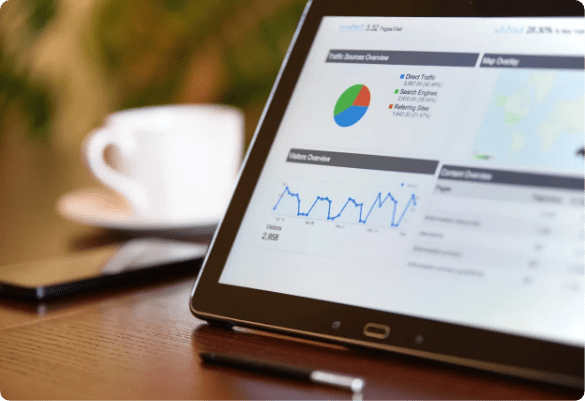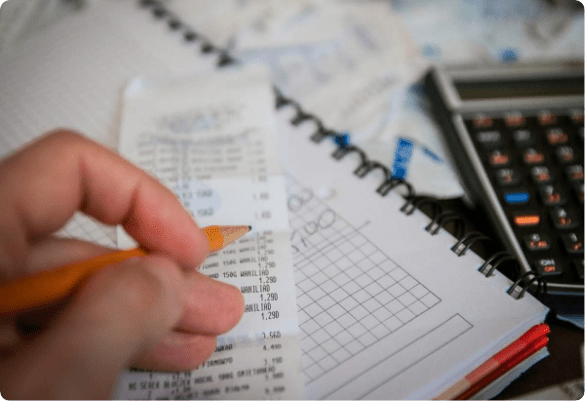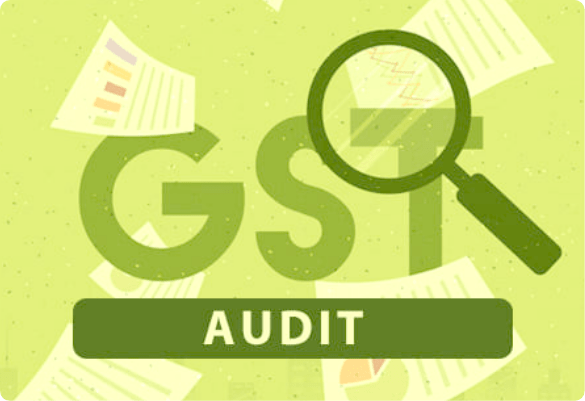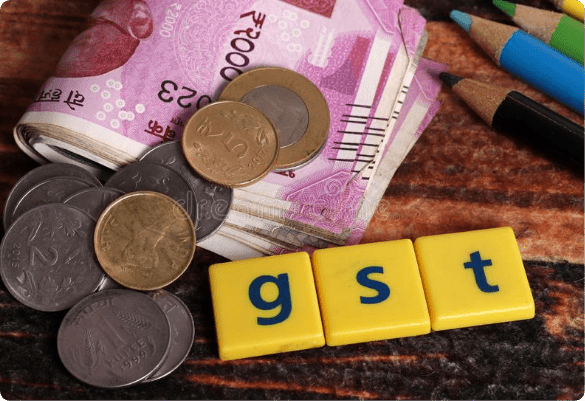Input Tax Credit under GST forms the foundation of the GST structure in India. GST Input Tax Credit has helped eliminate the cascading effect that existed in the pre-GST era.
Claiming of ITC can be a tricky business as claiming only the eligible ITC is the key. Claiming ineligible ITC can attract notices from the GST department and can land your business in trouble.
In this short article, we have explained GST Input Tax Credit in a very comprehensive way. We have also submitted an example to help taxpayers understand how to claim eligible ITC under GST.
What is Input Tax Credit under GST?
When a GST registered buyer pays GST on the purchase of goods or services, this GST amount is reduced from the outward liability payable on the outward supplies.
In simpler words, Input Tax Credit under GST will be a tax reduced from your outward liabilities payable on account of sales.
Does it sound too technical? Do not worry!
We will help you understand this with a simple example:
Input Tax Credit with example
All theory and no examples make a concept difficult to understand. To understand GST Input Tax Credit, let us consider an example:
Consider three entities in a transaction:
- Ram (The Supplier)
- Hemang (The Retailer)
- End consumer
Following are some more details on the transaction:
| Ram (Wholesale Supplier) | |
| Factor | Amount |
| Supplies Goods to Hemang | Rs.2,00,000 (Received) |
| Collects GST (18%) | Rs.36,000 (Received) |
| Total invoice value | Rs.2,36,000 (Received from Hemang) |
| Total Tax collected from Hemang | Rs.36,000 |
| Total Tax Paid to Government | Rs.36,000 |
| Direct incidence of Tax | Nil (paid to the government as received from Retailer) |
Now let’s see what the scenario from the Retailer’s side is:
| Hemang (Retailer) | |
| Factor | Amount |
| Value of Goods ( including the margin/profit addition) | Rs.2,0,000 + Rs. 30,000 (margin) =
Rs. 2,30,000 |
| Collects GST from the consumer (18%) | Rs.41,400 |
| Total invoice value | Rs.2,71,400 |
In the above table, we understand that Hemang (the Retailer) collects GST from the consumer on a total price of Rs. 2,30,000 (that includes value addition by Hemang).
Now, Hemang has already paid a GST on the amount of Rs. 2,00,000 while purchasing the goods from Ram (the Supplier).
So, now when Hemang (the Retailer) files his outward GST liabilities, he needs to pay the GST amount collected on the value addition.
| Hemang (Retailer) | |
| Factor | Amount |
| Total Tax collected from Consumer | Rs.41,400 |
| Tax Paid to Ram while purchase | Rs.36,000 |
| Tax payable to the government | 41,400 – 36,000 = Rs. 5, 400 |
| Direct incidence of Tax | Rs.5,400 |
In simpler words, we can summarize this example as follows:
- Ram (the Supplier) collects GST amount of Rs. 36,000 from Hemang (the Retailer).
Ram pays this GST amount to the government through his monthly GSTR-1 return.
- Now, Hemang (the Retailer) collects a GST amount of Rs. 41, 400 from the end consumer
But, Hemang need not pay this complete amount to the government as a GST liability. As he has already paid Rs. 36,000 on his Purchase or Input.
Hemang can now claim an Input Tax Credit of Rs. 36,000 while paying his outward GST liabilities.
- Thus, the net GST payable by Hemang to the government will be Rs. 5,400, which will be paid by cash. The rest 36,000 shall be adjusted from the Input Tax Credit availed for this transaction.
Input Tax Credit is the bedrock of the GST structure as it helps eliminate the ‘cascading effect of taxes.
In the pre-GST era, the businesses were not allowed to claim input credit of one tax form into another, thus allowing the cascading effect, i.e. Tax on tax effect.
Who can claim Input Tax Credit under GST?
Eligibility conditions to claim GST Input Tax Credit:
- The taxpayer should be a GST registered dealer
- The receiving party must have received goods or services or a mix of both
- A tax invoice or a debit note should be available that clearly mentions the total amount along with the GST amount paid to the Supplier
- The Supplier should have filed his GSTR-1 return accurately and on time on the GST portal for the transaction with the purchaser.
- If goods or services are received in parts (installments), ITC is to be claimed based on the tax invoice of the last installment.
- No ITC claim shall be considered valid where ITC is included in the cost of capital goods and depreciation on it is claimed (as per Section 16 sub-section (3) of the CGST Act of 2017)
- The buyer should complete the payment for the supplies (including GST) to the Supplier within 180 days from the date of invoice issuance.
Input Tax Credit for CGST/SGST/IGST & UTGST
Firstly, let’s understand the basic meaning of CGST, SGST, IGST & UTGST taxes.
- CGST
CGST (Central Goods and Services Tax) is applicable on the intra-state (within the same state) or intra-union territory (within the same UT) supplies of goods or services or a mix of both.
- SGST
SGST (States Goods and Services Tax) is applicable on the supply of goods or services or a mix of both within the same state.
- UTGST
UTGST (Union Territory Goods and Services Tax) is applicable on the supply of goods or services or a mix of both within the same Union Territory.
- IGST
IGST (Integrated Goods and Services Tax) is applicable for inter-state supply of goods or services.
While claiming the Input Tax Credit, the businesses must be aware of the sequence or manner they claim the ITC.
| ITC of | Utilize first for the payment of | Can be utilized later for the payment of |
| CSGT | To pay the CGST liability first | Utilize the balance CGST credit to pay IGST |
| SGST | SGST | IGST |
| UTGST | UTGST | IGST |
| IGST | IGST | First CGST and then SGST or IGST |
Documents for claiming ITC under GST
Taxpayers shall require the following documents to claim eligible Input Tax Credit under GST:
- A valid tax invoice issued by the Supplier to the recipient.
- The ITC claimed by the taxpayer should be available in the monthly GSTR-2B of the buyer.
- A debit note was issued w.r.t the tax invoice issued earlier by the Supplier.
- For imports – A ‘Bill of entry’ or similar document is required.
- An invoice issued by the recipient who has paid Tax under the RCM scheme.
- A credit note or an invoice issued by Input Service Distributor.
NOTE:
It is essential to understand that taxpayers will be able to avail of ITC only for the goods or services used for business purposes.
Any goods or services used for personal consumption shall NOT be eligible for claiming Input Tax Credit.
If goods or services are partly used for business and partly for personal consumption, then the ITC can be claimed only on the part used for business use.
Reversal of Input Tax Credit under GST
As stated in the previous segment, ITC can be availed only for purchases used for business purposes. Therefore, if any ITC is availed on the purchases used for non-business purposes, this type of ITC has to be reversed.
Following are some of the cases where the taxpayer has to reverse the claimed ineligible ITC:
- Failure of the buyer to complete the payment to the Supplier within 180 days from the date of issuance of the invoice by the Supplier. In this case, the buyer has to reverse the ITC claim.
- Inputs of goods or services or ‘Capital Goods’ used for personal consumption – The ITC claimed on them must be reversed.
- Credit Note issued by Input Service Distributor.
- ITC must be reversed for the supplies deemed ineligible under Section 17(5) – ‘Blocked Credits’ of the CGST Act.
- When a normal taxpayer converts to ‘Composition Dealer’.
- If you cancel your GST registration.
Important Fact:
The CBIC has notified the taxpayers that the final and authoritative source to identify your eligible ITC for the month is the auto-generated GSTR-2B form.
Cases where ITC cannot be claimed
Following are the cases on which ITC cannot be claimed:
- GST Input Tax Credit shall NOT be available on the purchases like food, beverages, beauty treatment, outdoor catering services, and beautification surgeries.
- ITC shall not be available on purchases of life insurance or health insurance.
- Purchase of motor vehicles or other conveyances except they are used for:-
- Transporting the passengers
- For training of driving, flying or navigating such vehicles
- When these vehicles or conveyances are supplied further
- Rent of a cab or other vehicle.
- Membership purchases of gyms, clubs or fitness centers
- Traveling perks or benefits extended to employees by the employer
- Goods/Services used for personal consumption
- ITC cannot be claimed on stolen or destroyed goods or goods that are given as freebies
- ITC shall not be available on purchases of goods and services required to construct an immovable property.
Except – Construction of a plant or machinery that will be used for the furtherance of business.
Claiming ITC in special circumstances
Section 18 of the CGST Act of 2017 specifies some special cases for which the Input Tax Credit under GST may be claimed.
- ITC can be availed if the exempted supplies are made taxable.
- ITC can be availed if a composition dealer decides to exit from the composition scheme.
- ITC is available for the taxpayers who have voluntarily opted for GST registration.
- Banks, financial institutions & NBFCs can avail 50% of their eligible ITC on inputs, capital goods or input services.
Banks & NBFCs can also avail ITC on purchases made for selling zero-rated or taxable goods.
- ITC can be availed in case of change in the constitution of the business or reorganization of the business structure.
In Conclusion
In this comprehensive article, we have tried to incorporate most of the prominent facets of the GST Input Tax Credit. ITC under GST is an important component of GST structure, and businesses need to be extra careful while availing their eligible ITC.
Claiming ineligible ITC under GST can put your business under the GST department’s radar and lead to GST registration suspension.
Businesses are advised to use automatic reconciliation tools to avoid clerical error and claim 100% of their eligible ITC.
In the upcoming article, we will help the readers understand all the Input Tax Credit components in detail.





